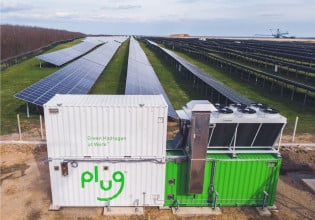SINTEF Energy Research announced a demonstration project, the EcoGrid EU, a €21 million EU project that is being coordinated in Trondheim by SINTEF. Sixteen partners from ten countries are members of the project. The project will raise the ceiling for how far an electricity grid can utilize unpredictable sources such as wind and sun.
According to senior researcher Ove Grande at SINTEF Energy, the results of the project will be directly transferable, not only to wind-power nations and nations that are investing heavily in solar electric power, but to all countries that are planning "smart" electricity grids.
"When a country develops a high capacity to produce solar and wind power, the usual assumption is that system operators will need backup sources that can quickly be switched on when the wind does not obey the weather forecast or when clouds unexpectedly shade solar cells. And back-up sources of supply to meet acute power-matching needs are expensive," said Grande. According to the SINTEF scientist, the usual assumption has been that such problems must be solved, for example, via the use of gas turbines or power imports from other regions or countries. However, in the system to be demonstrated on Bornholm it is the consumers who will solve the problem, by cutting back some of their electricity consumption for short periods. This is far cheaper than giving them reserve power, and is also more environmentally friendly. And because it is cheaper, it will raise the limits of how much solar and wind power an electricity grid can actually rely on," said Grande.
Wind power provides as much as 50 percent of Bornholm’s electricity. Customers in the project are invited to leave off using their heat pumps, washing machines and certain other electric appliances for short periods when the island’s wind turbines are out of operation due to weather conditions.
The carrot is that customers will reduce their electric bill with the aid of an intelligent power system known as Smart Grids. An automated system will disconnect an agreed proportion of each customer’s consumption when electricity prices are high. The same system allows customers to raise their consumption (e.g. to charge an electric car) when prices are low. Rather like what the Norwegian authorities are planning for households in Norway from 2016 on, participants in the Bornholm project will have new electricity meters installed in their homes. While today’s meters only show total power consumption, the new meters on Bornholm will be able to see when customers are using electricity, at intervals as short as five minutes. This is essential if the electricity bill is to be correct for the subscribers involved in schemes of this sort.
The project will develop a computer system that automatically calculates the price of electricity for customers on the basis of the situation in the generation and distribution system. This price should always reflect what it would cost to generate reserve power in the same periods. The system will continuously communicate these prices to a little smart box that will be installed in the 2000 customers’ homes along with the meters. When necessary, the box will switch electrical appliances on or off, depending on the customer’s prior assessment of what is an acceptable electricity price for different types of consumption.
Meanwhile, SINTEF will determine how much power can be freed up in this way, depending on how high the price per kilowatt hour will need to be for customers to cut out part of their electricity consumption.
"Of course we also need to demonstrate that the system works, and to acquire users’ experience and preferences. The latter is not the least important aspect. The future of this solution stands or falls by what customers can live with," said SINTEF scientist and project coordinator Ove Grande.
More news and information regarding the latest developments in Smart Grid electronics can be found at Darnell’s SmartGridElectronics.Net.






